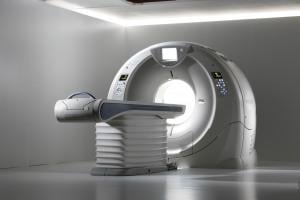
March 2, 2010 – Cardiac enhancements to ensure the highest image quality at lower radiation doses are among the new software upgrades released this week for the Aquilion ONE CT system.
A new ONE Beat Prospective Reconstruction shortens the interval window and reduces radiation exposure time. This results in a radiation dose savings of 21 percent as the more efficient imaging lowers the radiation exposure to the patient.
Another upgrade, Real Time Beat Control, calculates the running real time average of the heart rate to predict the next heart beat for a more accurately timed scan. Important for patients with arrhythmias, this feature ensures better accuracy and improves image quality while reducing repetitive exams.
New optimized timing of SUREStart can accurately determine contrast uptake time for a more accurate image. The upgraded SUREStart makes the transition from bolus chase to cardiac scanning virtually seamless. This feature creates better contrast timing, improves image quality and lowers contrast dose.
The Aquilion ONE can image up to 16 cm of anatomy in one rotation using 320 ultra high-resolution 0.5 mm detector elements impacting the diagnosis of patients who present with chest pain. With the new wide volume cardiac protocol (works-in-progress) for the Aquilion ONE, clinicians can image the entire heart, lungs and aorta in just two rotations. This may help rule out cardiac and lung issues for patients with chest pain with high-quality images at low radiation doses. Using traditional 64-detector row CT systems, scanning this entire area could take up to 20 to 30 X-ray rotations. Designed for ECG-gated CT imaging, Toshiba’s new wide volume technology is allowing clinicians to image an even greater area in fewer rotations and far less radiation dose.
For more information: www.medical.toshiba.com


 August 09, 2024
August 09, 2024 








